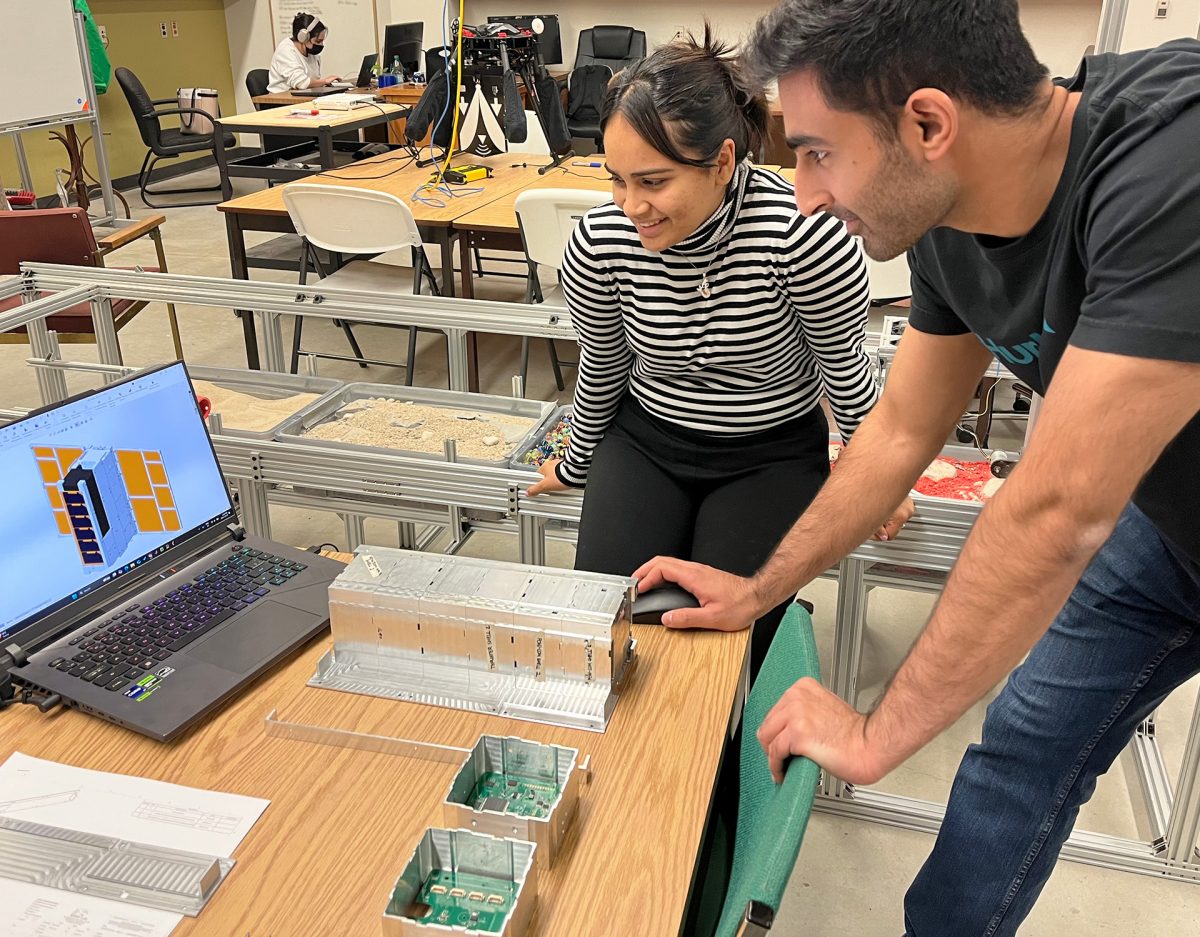
Students work on test assembly of CubeSat, LISSA
Little Innovator to make big impact on space awareness
Space is more accessible and is more highly utilized than it ever has been before. Space technologies are used for GPS tracking, communications, climate change research, storm tracking and so much more. Current spacecraft are required to have a de-orbit plan so they are not left in space for years after their mission is complete, however this was not always the case, which has led to an abundance of space debris in orbit. It is critical to track their pathways to avoid collisions of any kind. This is where the University of Manitoba (UM) and Magellan Aerospace (Magellan), in collaboration with Canada’s Department of National Defence (DND) science and technology organization, Defence Research and Development Canada (DRDC) and the United Kingdom’s Defence Science and Technology Laboratory (Dstl) come in with a new satellite mission to monitor and protect the Earth’s orbit.
A research and development microsatellite by the name of ‘Redwing’ which is being designed, built and operated by Magellan and funded by DND, will house a nanosatellite, designed and built by UM’s Space Technology and Advanced Research Laboratory (STARLab). This nanosatellite, known as the Little Innovator in Space Situational Awareness (LISSA, pronounced Lee-sa), will be deployed from Redwing once in orbit and will fly in tandem to monitor surrounding space objects. Uniquely, LISSA’s mission focuses on the South Pole. Current tracking networks lack good sensor coverage in this area and instead rely on mathematical projections to estimate where objects are. LISSA aims to fill this gap by actively tracking orbital objects over Antarctica.
Philip Ferguson, Associate Professor, Department of Mechanical Engineering and director of STARLab is no stranger to these kinds of missions. Last year, his team launched a CubeSat called ‘Iris’ into space, with the goal of studying the weathering of space rocks under solar radiation. They are also currently working on another CubeSat that will empower northern Inuit communities with ice and snow remote sensing data, helping them to assess ice safety. What is so great about these projects, is the experience that students get. It’s not everyday that a student can say that they worked on a satellite that got launched into space.
Andrew Bowman graduated with a BSc in Mechanical Engineering in 2022 and is now working on his master’s degree in the lab. He wasn’t initially interested in space until his final year of his undergraduate degree, where he worked on a lunar probe with Magellan for his capstone project. From then on, he was hooked. He worked on the final stages of Iris as a project manager and is highly involved with the work on LISSA. Every student in the lab plays some part in the project. Several graduate students have theses related to LISSA, including the development of the CubeSat’s thruster and investigations into orbital maneuvers. Bowman’s thesis is focused on improving the methods used to make space structures and lowering the associated barriers to entry. LISSA is designed using a modular structure, allowing him to investigate how this ‘building blocks’ approach can improve the satellite development process. He has also explored new analysis and testing methods with Magellan as part of the Redwing programme.
Iris was the starting point for designing LISSA, and the students certainly learned a lot from building it. The mission goals and requirements are different and LISSA is more integrated with industry than the research-focused Iris. Bowman comments that having a seat at the table with partners such as DND and Dstl is such a great learning opportunity. Being accountable for high-level responsibilities throughout the entire process of conceptualization, design, manufacturing and testing can’t be underestimated. It’s rare for a student to work through an entire design process, as most assignments end after the research and design phase and they never see their work come to life. It’s an experience that he will never forget and even has him considering a PhD so he can stay on for the entire duration of the project to see Redwing launch in 2027.






